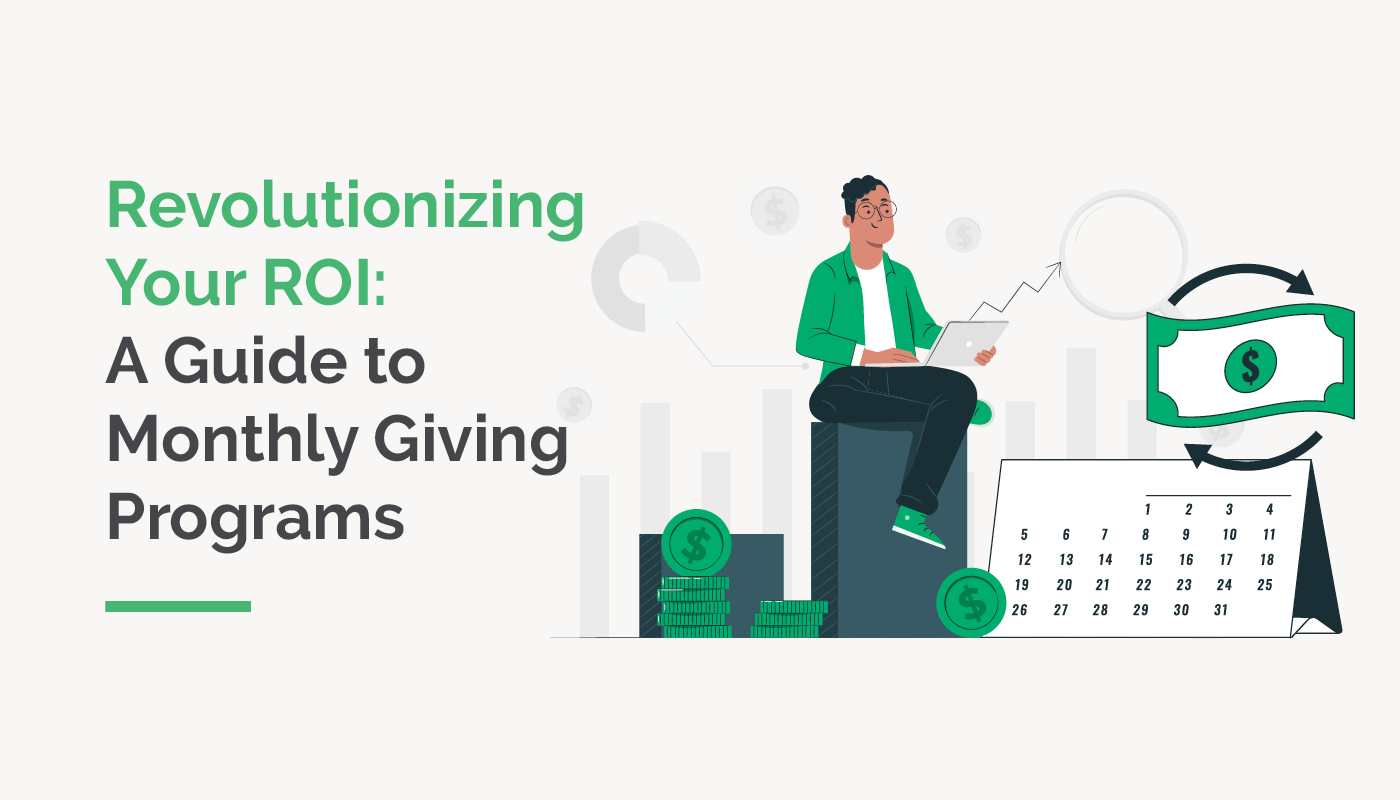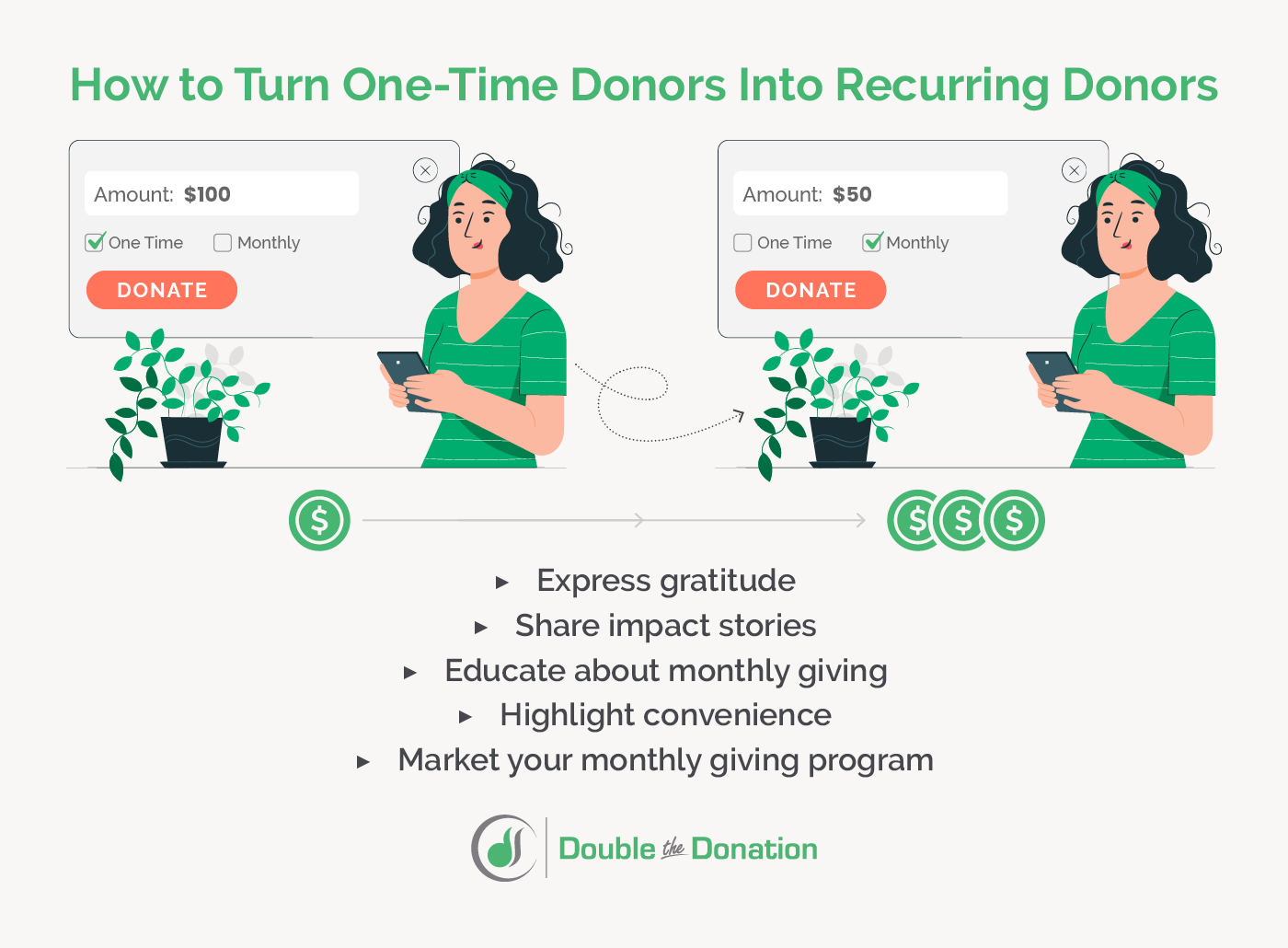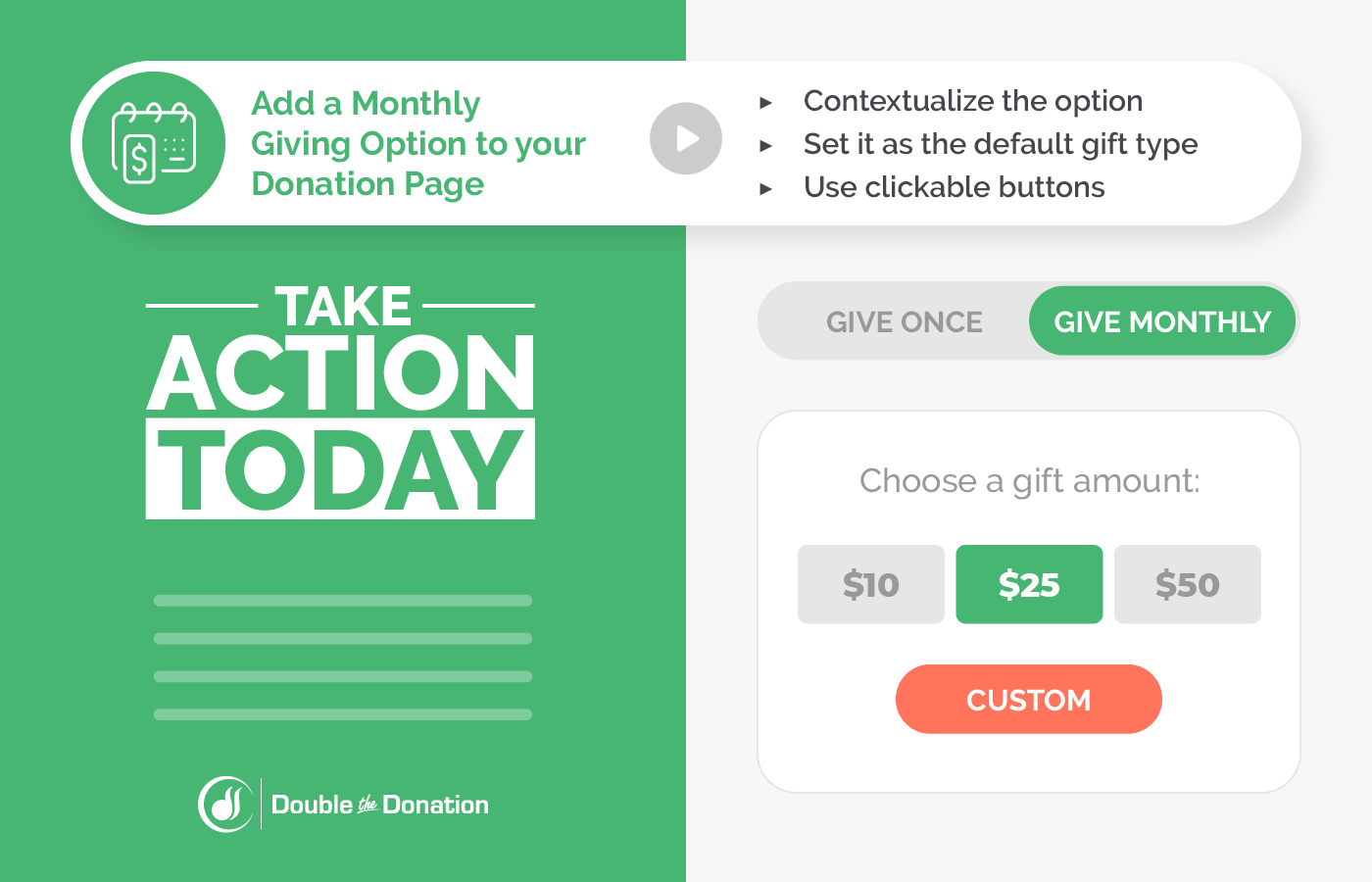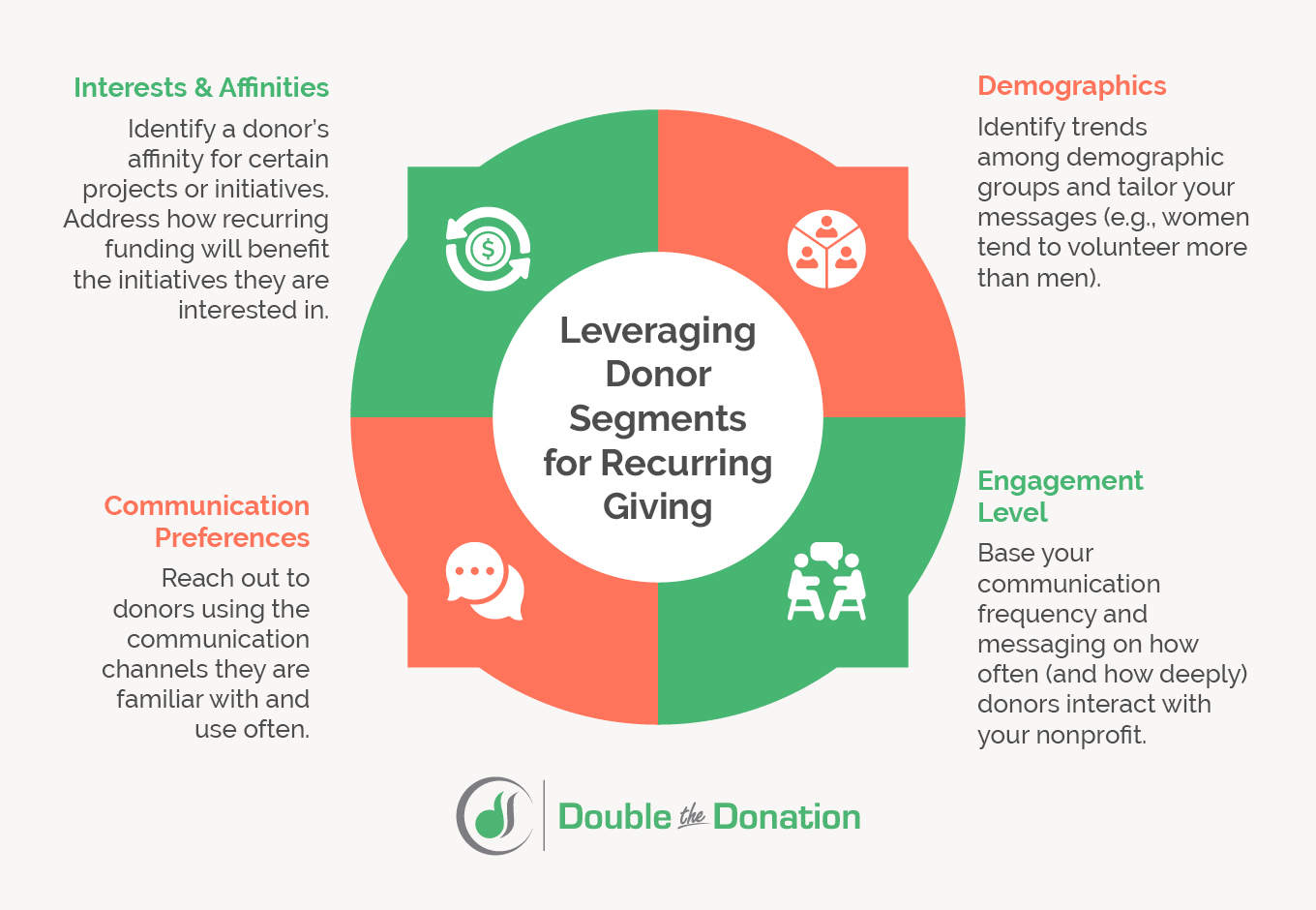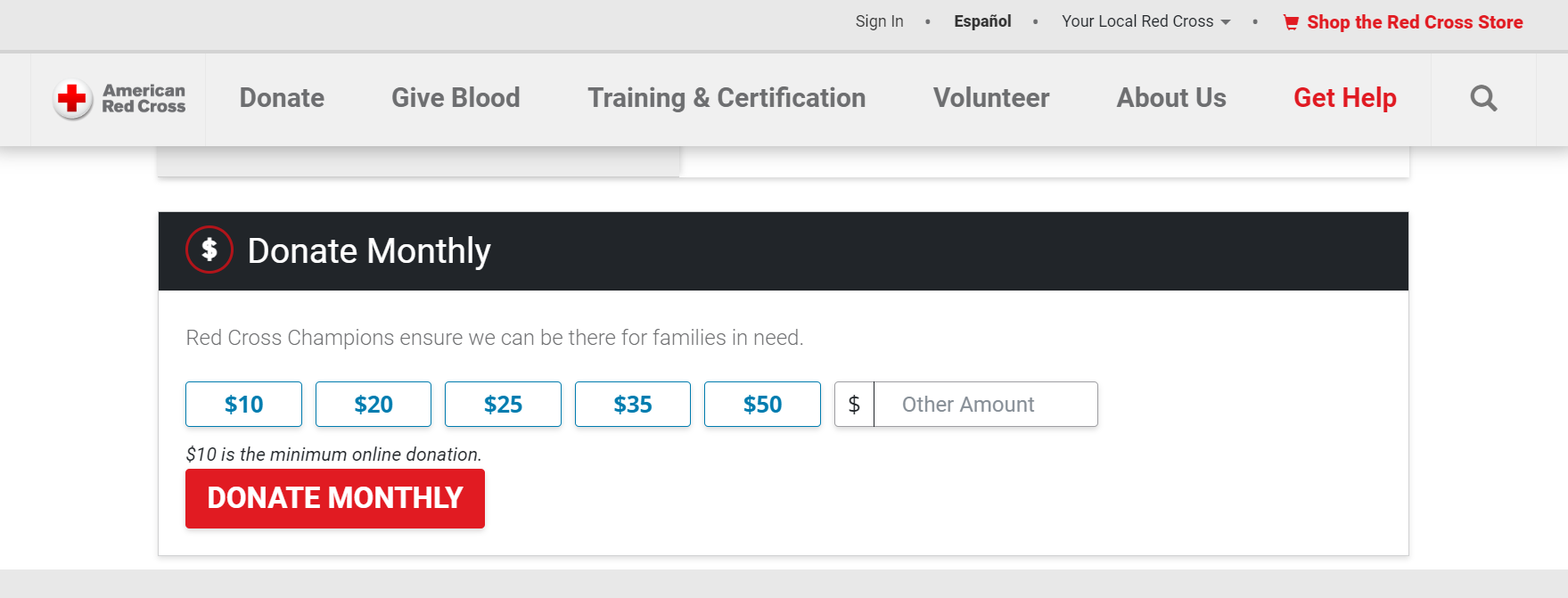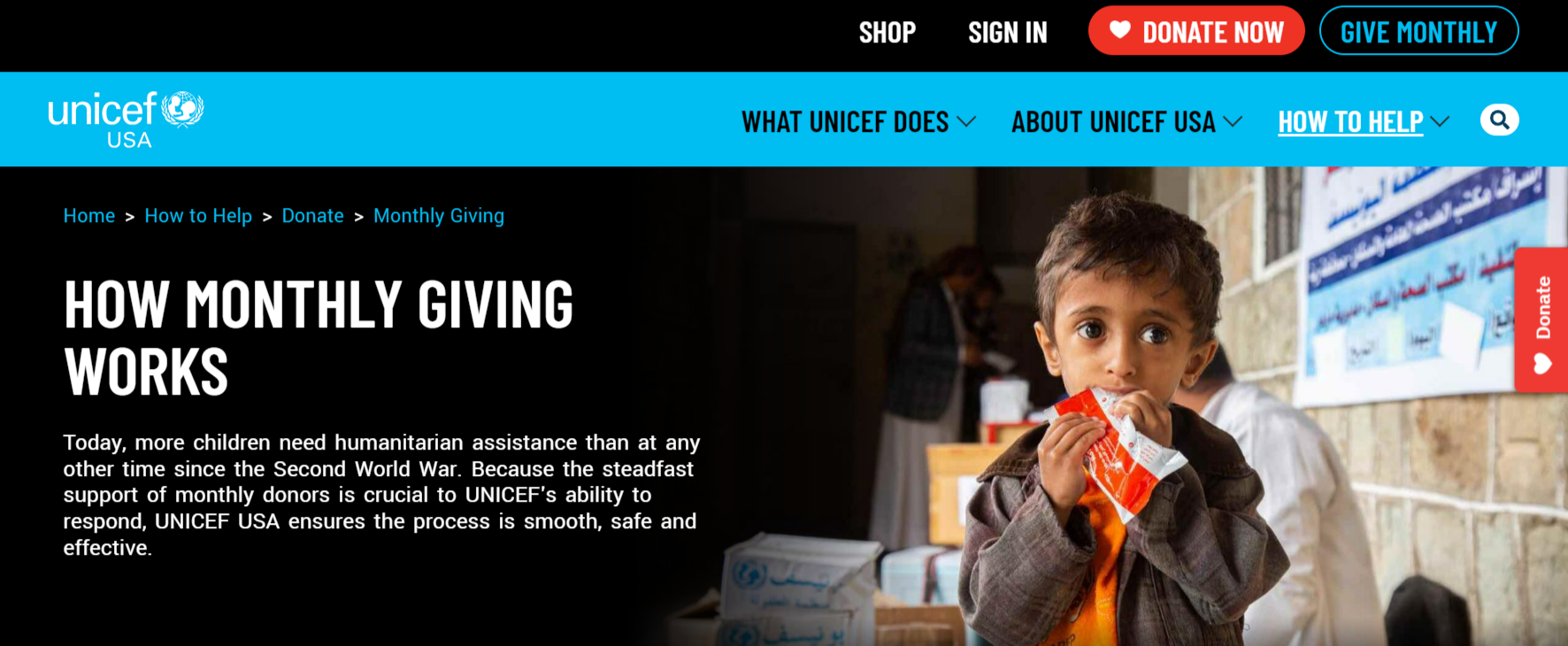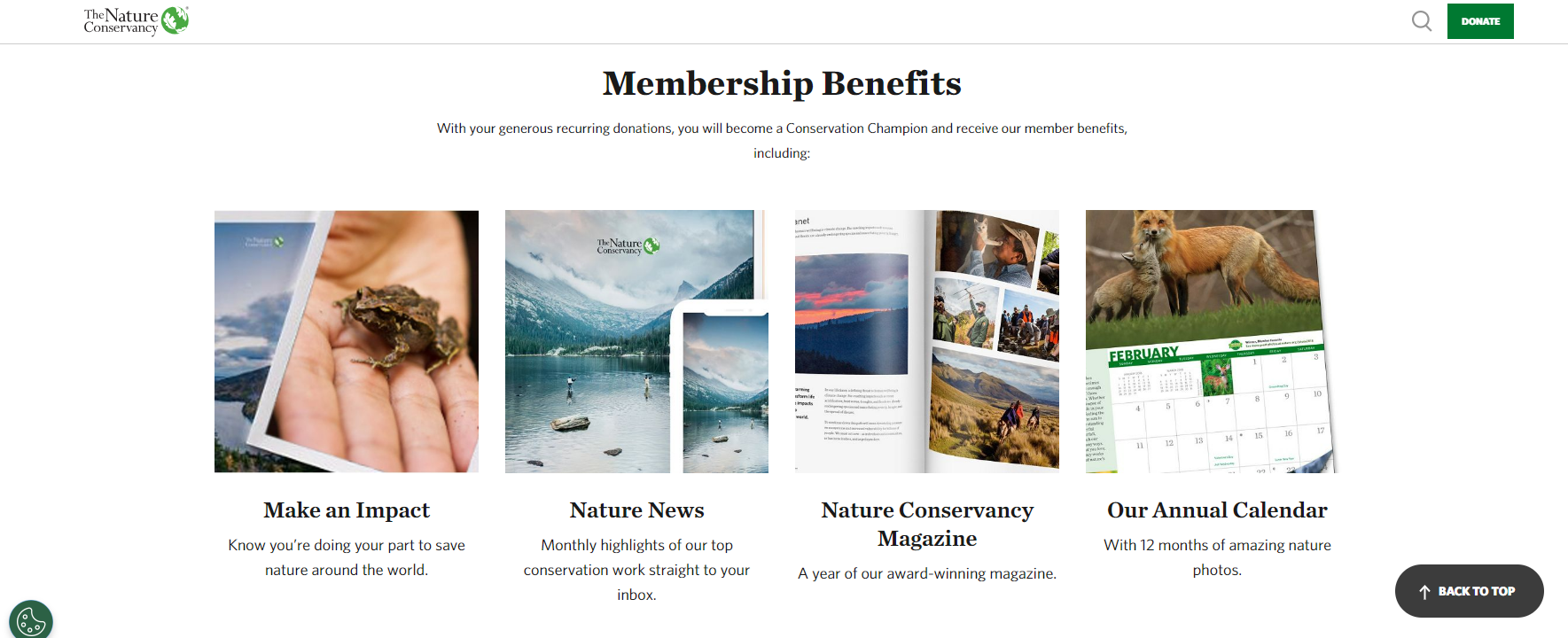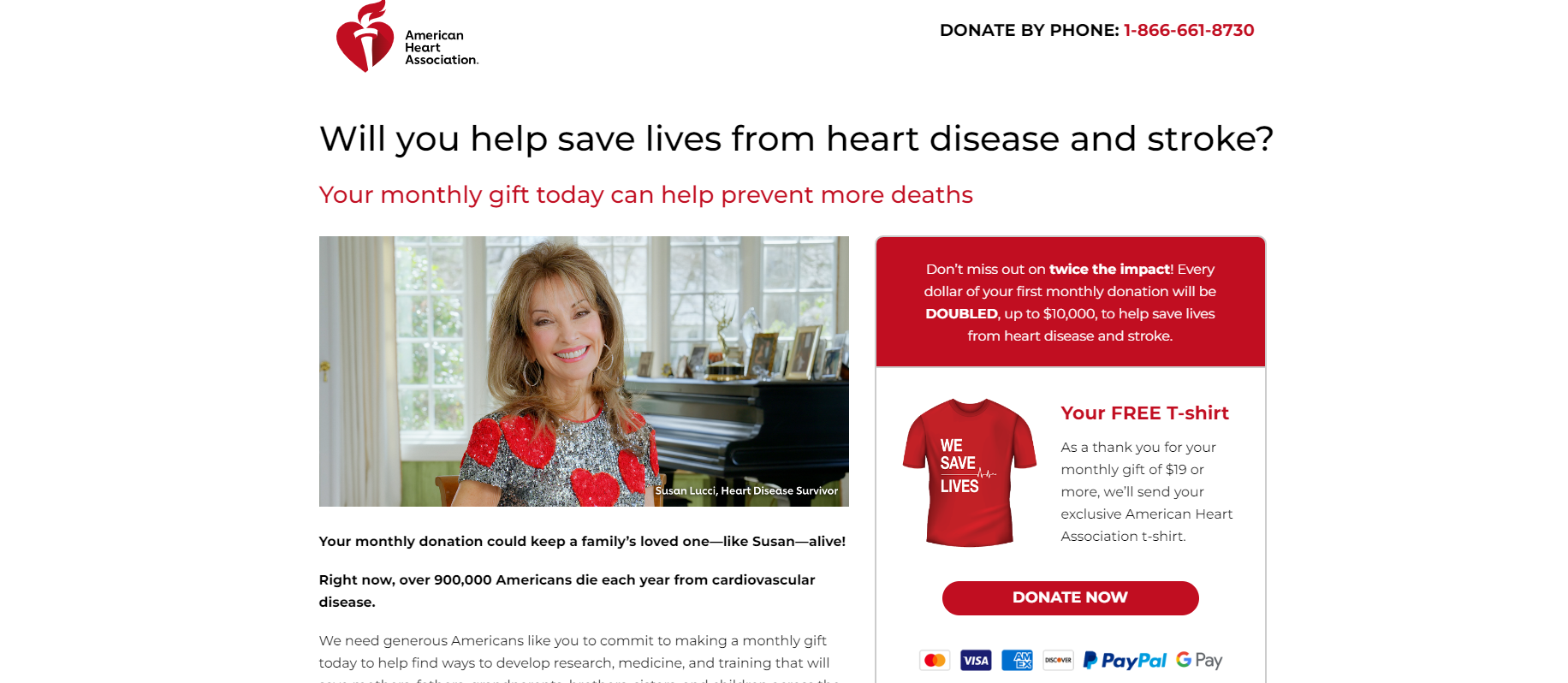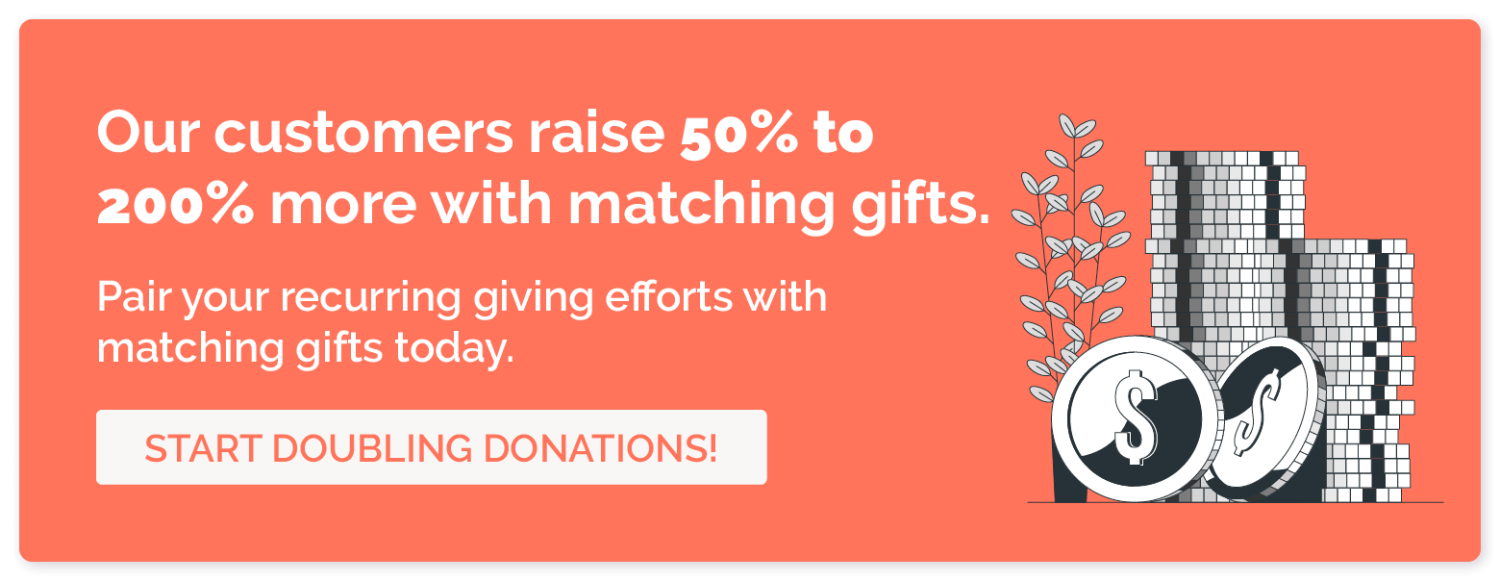Revolutionizing Your ROI: A Guide to Monthly Giving Programs
What if you could cut the guesswork and accurately predict how much fundraising revenue you’ll have at your disposal each month? You’d be able to plan your finances effectively, allocate funds where they’re most needed, and achieve mission-critical goals.
Adopting a monthly giving program is a win-win-win for your nonprofit, beneficiaries, and donors—you get a consistent revenue stream, your beneficiaries get high-quality programs, and your donors can make budget-friendly donations at regular intervals.
In this guide, we’ll help you access this powerful revenue stream with this information:
- Monthly Giving Program FAQs
- 10 Tips to Create a Monthly Giving Program
- 5 Examples of Monthly Giving Programs
As we review these tips, consider your nonprofit’s current donor base and how they would respond to a monthly giving program. Or, if you already offer one, think about how you could improve it to yield a higher return. Let’s dive in!
Monthly Giving Program FAQs
What is a monthly giving program?
A monthly giving program is a recurring donation program where supporters give regularly throughout the year. Most recurring giving programs are structured around a monthly schedule (which is why it’s our focus for this content), but supporters could make contributions on a biweekly, bimonthly, or even semiannual basis.
What are the benefits of a monthly giving program?
There are numerous advantages to having a monthly giving program, such as:
- Consistent and predictable revenue. Monthly donors provide a stable and reliable source of income. This consistency helps in budget planning and ensures nonprofits can better allocate resources.
- Increased lifetime value. Monthly donors tend to give more over the long term compared to one-time donors. Their cumulative contributions add up, increasing their lifetime value. In fact, the average recurring donor gives $287 per year while one-time donors give $192.
- Reduced fundraising costs. Acquiring new donors can be expensive and time-consuming. Monthly giving programs often have lower acquisition costs because once a donor is signed up, they continue to give without the need for additional outreach.
- Improved donor retention. Monthly donors tend to have higher retention rates than one-time donors. They are more invested in the organization’s mission and are less likely to lapse. Additionally, many monthly donors have their donations given automatically, limiting the chances they’ll forget to donate and increasing reliability.
Not to mention, a monthly giving program enhances donor engagement by making supporters feel a stronger connection to your organization. Because monthly donors actively support your work on an ongoing basis, they will be more inclined to participate in your organization’s other campaigns, attend events, and advocate for your cause.
How do you turn one-time donors into recurring donors?
Converting one-time donors into recurring donors requires a thoughtful and strategic approach. Here are some steps you can take to encourage donors to make ongoing contributions:
- Express gratitude. Make donors feel valued and connected to your organization. Show appreciation for their initial donation promptly with personalized thank-you emails or letters.
- Share impact stories. Regularly communicate the impact of their donation. Use success stories, testimonials, and updates to illustrate how their support makes a difference.
- Educate about monthly giving. Share information about your program in your communications. Explain the benefits of becoming a recurring donor, such as having a more significant and sustained impact on your cause.
- Highlight convenience. Let donors know that monthly giving is an easy way to support your cause without making a large upfront financial commitment.
- Market your monthly giving program. Pull all of these elements together in marketing materials for your program. Use your website, social media, email, and other digital marketing channels to spread the word about your program.
According to eCardWidget’s donor retention guide, it’s also more cost-efficient for your nonprofit to deepen relationships with existing donors than to acquire new ones.
10 Tips to Create a Monthly Giving Program
Define Clear Objectives
Start by setting clear goals for your program. Determine what you want to achieve in terms of:
- Revenue
- Donor retention
- Impact on your mission
Along with these targets, consider any milestones your organization might reach along the way. Share these relevant accomplishments related to these goals with potential donors to encourage them to get involved. For example, you might share how a hundred donors have chosen to make monthly gifts, allowing your nonprofit to launch a new mission-related program.
Brand Your Monthly Giving Program
Make your program stand out by giving it a distinct identity. Encourage supporters to become invested in being monthly donors by creating a program name related to your mission. Then, design a logo and thematic elements to help promote the brand cohesively across materials.
As you develop engaging marketing materials related to your program, incorporate social proof to cultivate a sense of community. For example, testimonials and photos of current monthly donors can encourage other supporters to become part of something bigger by committing to monthly giving.
Add a Monthly Giving Option to your Donation Page
Only 14% of organizations prompt donors to make a recurring gift during the donation process, meaning there might be a missed opportunity right on your donation page to capture donors’ long-term support.
Your donation page should prominently display an easy-to-select option for recurring gifts. Here are a few ways you can highlight monthly giving on your donation page:
- Contextualize the option: Briefly explain the impact of monthly giving on your donation page.
- Set it as the default gift type: Encourage donors to opt in by making monthly giving the default gift type. Just make it easy to switch to one-time giving and clear how to opt-out so donors don’t feel tricked into giving monthly.
- Use clickable buttons: Allow users to opt in with just the click of a button right from your donation page.
To further maximize the impact of these gifts, integrate with matching gift software to add the ability to easily match gifts. Auto-submission technology by Double the Donation automatically informs donors whether they’re eligible and submits the match request for them.
Develop a Compelling Case for Support
Craft a compelling and emotionally resonant case for support. This message should clearly articulate why monthly donations are essential for your organization and how they will make a difference.
No matter the platform you share it on, you can create a compelling case for support by including:
- Emotional and logical appeals: Balance emotional narratives with data and statistics that prove the effectiveness of your program. This approach captures your audience’s attention while reinforcing the program’s mission.
- Answers to common objections: Be transparent about the program, acknowledging potential concerns your donors may have. For example, note that monthly giving can be a significant financial commitment, but assure donors that they can cancel or adjust the monthly contribution at any time.
- Sense of belonging: Make donors feel like partners to your organization. Thank them for their participation, create a special name for monthly donors, and offer perks like access to blogs and webinars.
Remember to tailor your message to your audience to make it uniquely compelling to each donor. For example, short emotional appeals tend to do better on social media, while thorough research reports are better left on your blog and can be linked to in external communication.
Segment Your Donor List
Use donor data to segment your existing supporter list and identify potential monthly donors. Divide them into groups based on shared characteristics such as:
- Interests and affinities, or their interest in your specific projects or initiatives
- Demographics, including trends related to age, gender, or income level
- Communication preferences, such as email, social media, or text.
- Engagement level, which refers to the frequency at which donors interact with your nonprofit
Then, use these groups to effectively target your outreach. For example, you might ask annual donors to spread their annual gift across the year in monthly donations, instead. For donors who give occasionally, urge them to switch to a more consistent donation frequency.
Offer Multiple Giving Levels
Help donors determine how much to give by offering different giving levels or suggested monthly donation amounts. This allows donors to choose a level that fits their budget.
Suggested giving levels can motivate upgrades in giving, especially when you explain what each level achieves. For example, a $50 donation might cover the cost of a month’s worth of food for a dog at an animal shelter. The shelter could recommend $50 as a giving level, explaining that donors could feed a dog for a month simply by increasing their gift size.
Communicate Clearly
Clearly explain how your monthly giving program works from beginning to end. Remember to include instructions for:
- The donation process
- Payment options
- How donors can manage their recurring gifts
- Ways to further their impact, such as matching gifts
Also, provide regular updates about the program’s success to donors who participate in it. Strengthen relationships with your monthly donors by sharing the specific impact that was made with their gift and thanking them for their dependability.
Showcase Success Stories
Illustrate how monthly donations have positively affected your cause. Share the specific successes achieved by your program through testimonials, case studies, and other illustrative stories that showcase your work.
To make a compelling success story, be sure to include:
- A clear problem and solution: Identify the issue that your nonprofit hopes to address and the potential consequences of ignoring it. For example, a food bank might provide the number of people affected by malnutrition every year and how many people in their community received food as a result of the organization’s fundraising efforts.
- Relatable characters: Introduce a human element by mentioning real people that potential donors can relate to. To make your story truly resonate, highlight their dreams and emotions as they relate to the problem at hand. For example, the food bank might tell the story of a beneficiary, using quotes or a complete testimonial to communicate their struggles and hopes.
- Measurable results: Demonstrate your nonprofit’s success by providing data and statistics to show your organization’s real, measurable results. Using our example of the food bank, the organization could include data about the number of community members served and the dollars spent on groceries for beneficiaries. To go one step further, the food bank might share before and after pictures of a beneficiary (with the individual’s consent.)
Above all, ensure your stories are authentic by using real quotes and credible statistics where possible.
Offer Incentives
Incentivize recurring giving by offering perks or benefits to motivate donors to join your monthly giving program. Incentives may include:
- Exclusive content
- Early access to events
- Special recognition
Incentives not only encourage donors to engage in monthly giving but also boost donor retention by exciting donors about their continued support! For example, a nonprofit might provide donors with exclusive merchandise sales codes, or a museum might offer discounted tickets.
Promote through Various Channels
Use multiple communication channels to promote your monthly giving program in various formats. Create marketing materials for your:
- Website: Create a landing page about your recurring giving program, ideally separate from your existing donation page and listed as one of your “Ways to Give.” This should serve as the go-to resource for all information concerning your program, and all other channels should link back to this page.
- Email campaigns: Use compelling subject lines, such as “We urgently need your help,” and strong visual elements like pictures of beneficiaries to explain the program in your email newsletters. Educate readers about the process and direct them to your website for more information.
- Social media channels: Capture your audience’s attention with visually appealing social media content, such as posts that include images, videos, and infographics. Consider shareability as you craft each post so your followers will spread it to their followers and so on.
A multichannel approach expands the reach of your promotional materials and allows you to leverage the strengths of each platform to convey your message.
5 Examples of Monthly Giving Programs
American Red Cross
The monthly giving page on the American Red Cross’s website uses the organization’s strong brand colors to encourage donations. Along with using brand colors, this form reinforces supporters’ connection to the Red Cross by referring to monthly donors as “Red Cross Champions” and calling out their important role in the organization’s mission.
The page also makes it easy for visitors to give by limiting form fields to just one prompt: the giving amount. After selecting a suggested giving level, donors are taken to a new page where they can opt-in to cover the donation’s processing fees, select a specific effort to support, and input their payment information.
UNICEF USA
On their monthly giving page, Unicef gives thorough background information on how monthly giving works. The page explains the process step-by-step and even provides an email address and phone number to contact in case visitors have questions.
This page helps donors understand why their repeated support is important and how it will be used. Plus, it showcases the simplicity of recurring giving, making visitors more likely to sign up when they realize how easy the process is.
The Nature Conservancy
The Nature Conservancy’s monthly giving page positions recurring donors as “Conservation Champions,” who receive membership benefits, including:
- Monthly updates on the organization’s conservation efforts
- A year-long subscription to the organization’s magazine
- An annual calendar featuring photos of nature for each month
These incentives entice donors to engage in monthly giving. Beyond these tangible benefits, the page also highlights the ease and efficiency of recurring giving.
charity: water
Visitors get a glimpse into the impact of their donations on charity: water’s monthly giving page. The donation form offers suggested giving amounts that, when selected, display the number of people who receive clean water as a result of that donation amount. This draws a direct connection between the donation and its impact so donors know they’re truly making a difference.
The form also notes that 100% of the donation funds water projects, reinforcing donors’ confidence that their gift will be put toward the nonprofit’s mission. Coupled with strong visuals, the form entices donors to give (and give more) by emphasizing the gift’s importance.
American Heart Association
The American Heart Association creates a sense of urgency on its monthly giving page by noting the opportunity to have a donation matched for double the impact. By using language like “Don’t miss out” and “Save more lives by giving now,” this page encourages donors to commit to monthly gifts immediately!
Also, the page includes a photograph of a heart disease survivor and urges visitors to “keep a family’s loved one,” like the woman pictured, alive by donating. This helps donors see the potential impact of their donation and the importance of maximizing the amount they’re able to give.
Final Thoughts on Monthly Giving
Successful monthly giving programs can mean the difference between unpredictable donations and consistent, sustainable support for your organization. Develop a monthly giving program tailored to your nonprofit’s unique supporter base and needs to increase donation amounts, strengthen relationships, and fund your work for years to come.
For more tips on securing monthly support, check out the following resources:
- Improving Your Donor Development Approach: 15 Expert Tactics. Donor development is a key element of securing monthly support. Learn how to steward donor relationships in this guide!
- Understanding the Fundraising Cycle: 5 Ways to Raise More. The fundraising cycle allows nonprofits to steward donors and secure their continued support. Plan the strategic steps you’ll take to boost fundraising using the tips in this guide.
- Building Trust and Loyalty: Mid-Level Donor Program Basics. To recruit supporters for your monthly giving program, you’ll first need to identify and retain mid-level donors. Read our guide to learn the basics!
